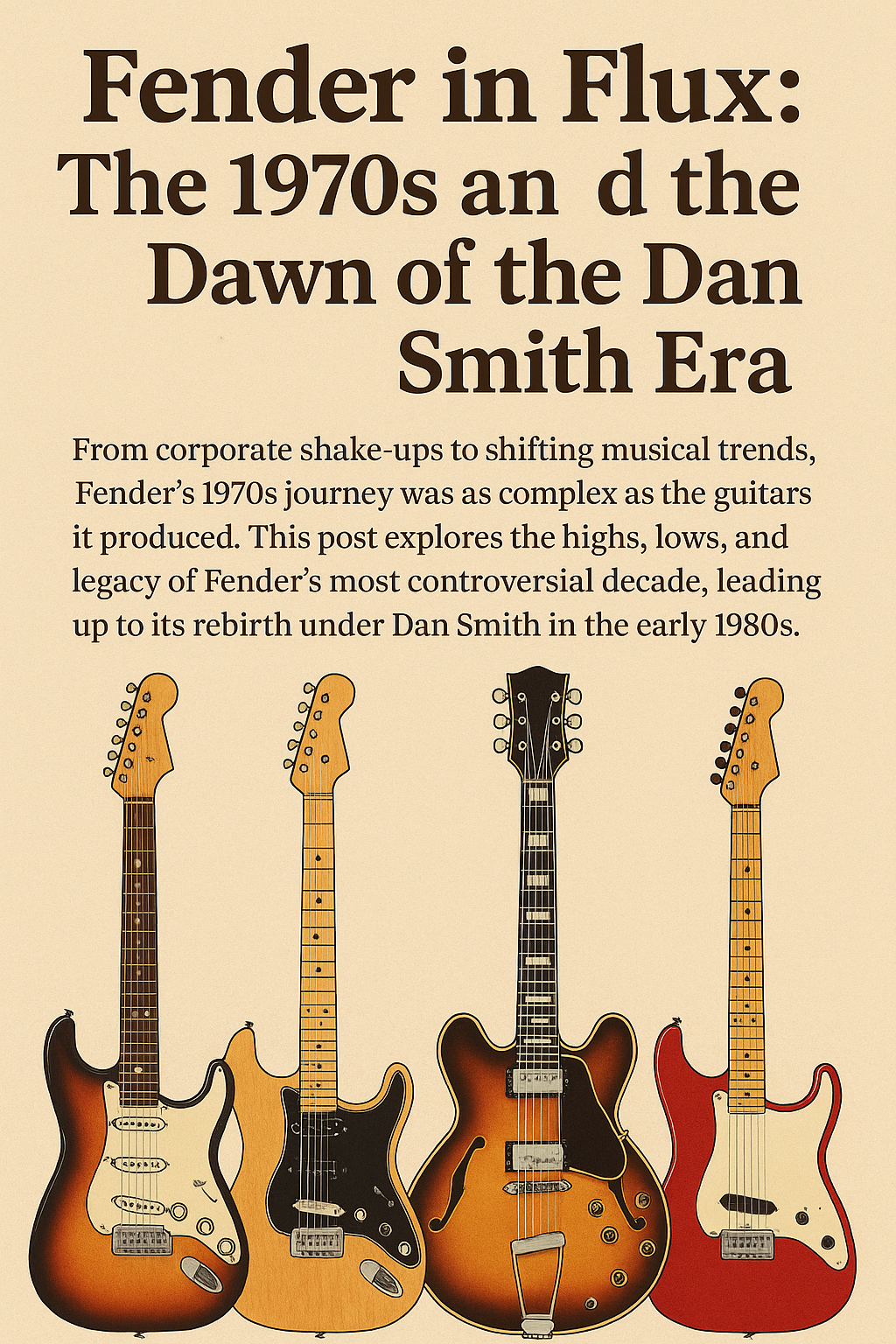The CBS Era: A Corporate Takeover
In 1965, Leo Fender sold his company to CBS (Columbia Broadcasting System), believing his health issues would prevent him from running the business. While early CBS years retained some continuity, by the 1970s, corporate priorities shifted dramatically. Cost-cutting became a dominant theme, and guitarists soon noticed.
-
Neck Pocket Woes: CBS introduced wider neck pockets to reduce manufacturing costs, leading to looser neck fits and diminished sustain.
-
Heavier Bodies: Ash and other dense woods became more common, resulting in heavier instruments.
-
Finish Changes: Fender moved from nitrocellulose lacquer to thicker polyester finishes, affecting resonance and tone.
Key Models and Developments
Despite criticisms, the 1970s weren’t without innovation. Fender introduced new models and features that remain significant to collectors and players alike.
-
Telecaster Custom/Deluxe/Thinline (Early to Mid ’70s): Featuring Wide Range humbuckers designed by Seth Lover, these models gave Tele fans a new voice with more output and tonal variety.
-
Stratocaster Adjustments (1971–1981): Larger headstocks, bullet truss rods, 3-bolt necks, and micro-tilt systems were added—many seen today as inferior to vintage specs, though some have their defenders.
-
Starcaster (1976): A rare semi-hollow guitar aimed at competing with Gibson’s ES line, the Starcaster is now a cult favourite.
-
Lead Series (1979–1982): Budget-friendly and innovative, the Lead I, II, and III guitars represented Fender’s effort to regain ground among working musicians and students.
Quality Decline and Market Pressure
By the late ’70s, players increasingly turned to Japanese brands like Tokai, Ibanez, and Yamaha, whose instruments offered superior craftsmanship at competitive prices. Fender’s reputation for quality had taken a serious hit, with many players complaining of sloppy construction, excessive weight, and tonal inconsistency.
The U.S. guitar industry as a whole was struggling to keep pace with these agile competitors—and something had to give.
Enter Dan Smith: Fender’s Turning Point
In 1981, Fender hired Dan Smith—an executive from Yamaha—with a mandate to turn the company around. His impact was immediate:
-
Return to Quality: Smith drastically cut production numbers to focus on quality over quantity.
-
Revival of Vintage Specs: He reintroduced features like 4-bolt necks and smaller headstocks.
-
Birth of the American Standard: His team laid the groundwork for the now-iconic American Standard Stratocaster.
-
Fender Japan (1982): Smith and Bill Schultz spearheaded the launch of Fender Japan, producing high-quality reissues that rivalled—and sometimes surpassed—American builds of the time.
Dan Smith’s influence ushered in what many call Fender’s rebirth, setting the stage for the company’s modern renaissance.
Final Thoughts
Fender’s 1970s output is a paradox: guitars from this era are often derided for their quality but remain coveted for their vintage status, unique tone, and aesthetics. The era also serves as a vital chapter in Fender’s evolution, showing how even giants must adapt—or risk fading into irrelevance.
With Dan Smith at the helm, Fender began to climb back toward the top. But the lessons of the 1970s still echo: quality, innovation, and player trust are the cornerstones of enduring success.









